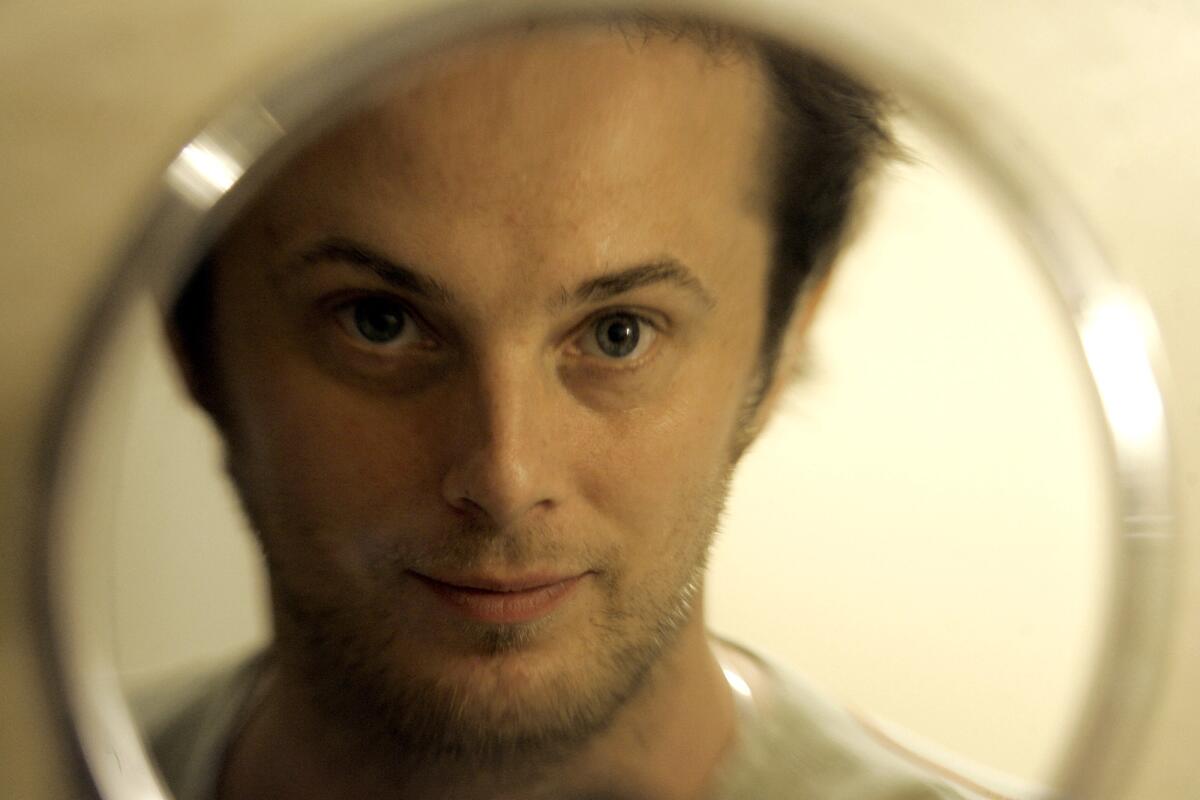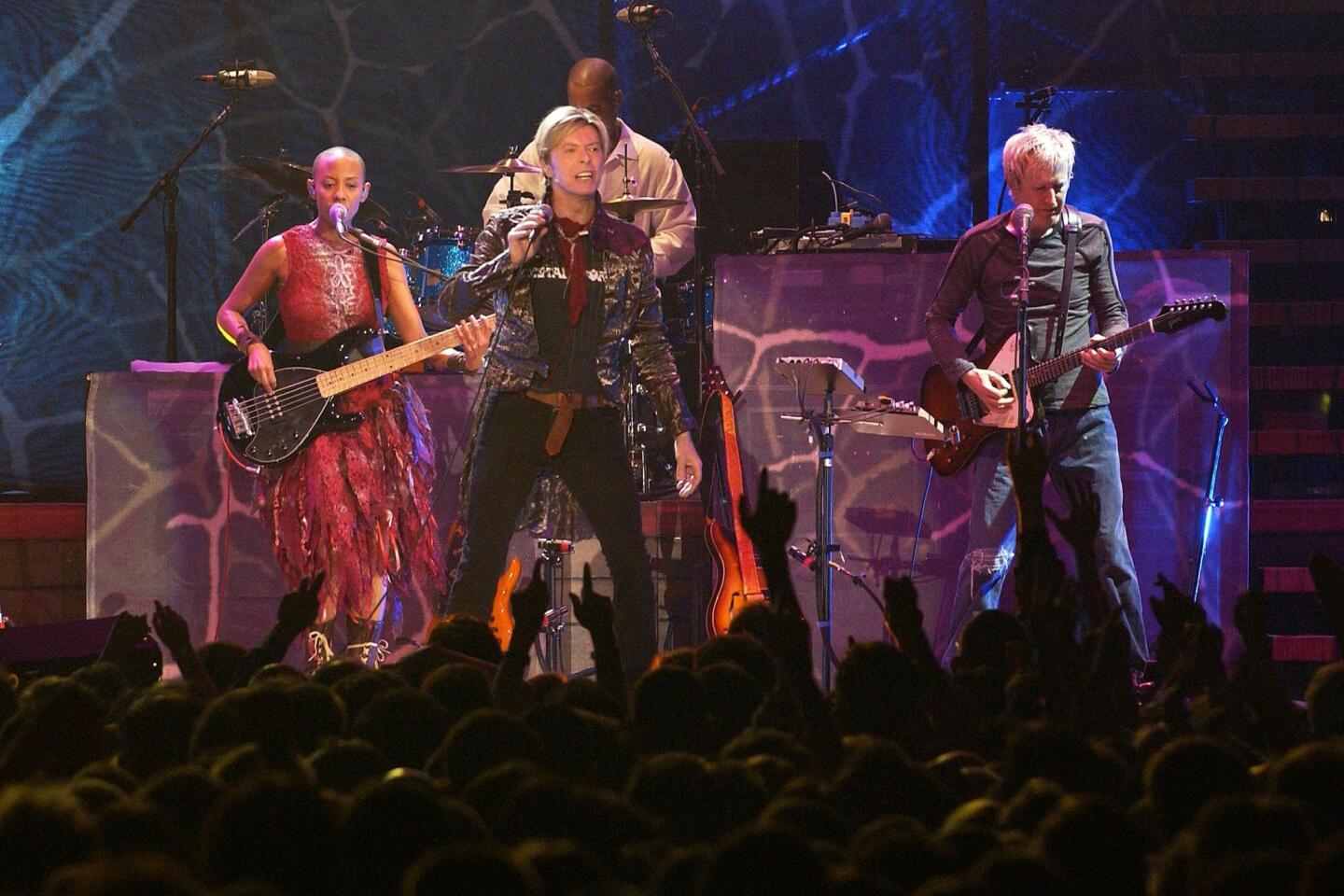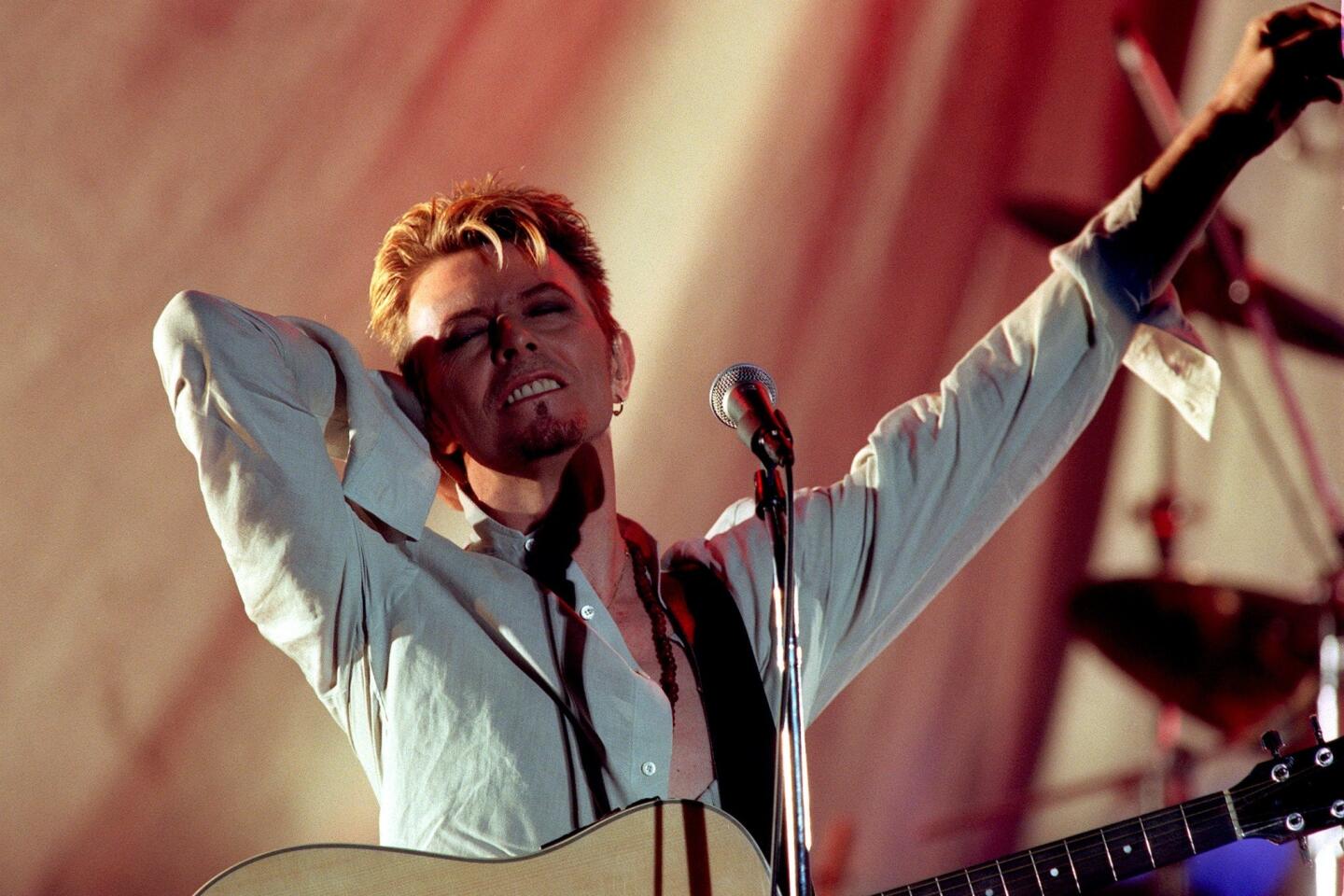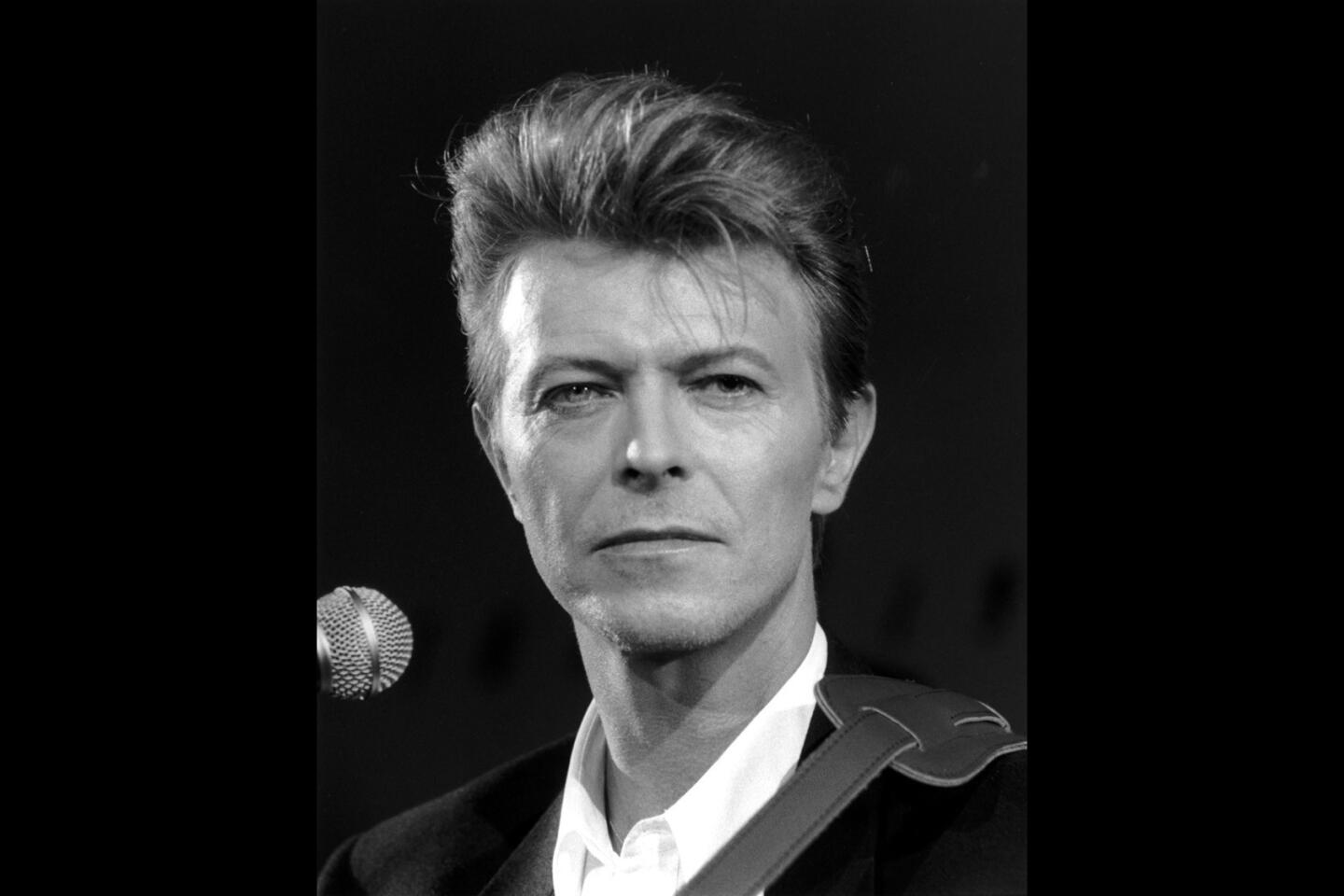From the archives:: How David Bowie influenced his son’s first movie

Duncan Jones is photographed at the Four Seasons Hotel in Beverly Hills on May 29, 2009.
- Share via
David Bowie died Sunday, Jan. 10, at the age of 69. The following is from a 2009 interview about his son’s first movie.
Duncan Jones swears that he never saw the themes of his directorial debut “Moon” intersecting with some of his well-known father’s best-known work.
“It wasn’t until we finished shooting and people were like, ‘This is kind of like what your dad was doing,’ that I realized, ‘Oh, yeah, I guess it is.’ How naive was I?”
Though Jones refers to him offhandedly as “dad,” to the rest of the world he is David Bowie (ne David Jones), writer of the song “Space Oddity,” creator of the alien rock-god Ziggy Stardust, star of the film “The Man Who Fell to Earth.”
See more of our top stories on Facebook >>
“Moon,” Duncan Jones says, “was certainly in no way a conscious reflection of what my dad had done, but there’s no getting away from the fact that I grew up around the same things that were informing him, and I am the sum of my experiences, and my experiences tend to overlap [with] what my dad’s were.”
From a screenplay credited to Nathan Parker with a story by Jones, the film, which opened in L.A. theaters on Friday, follows a lone worker (Sam Rockwell) on the moon, where he oversees the harvesting of energy from the lunar surface. As he prepares to return to Earth, he takes ill and is visited by someone who seems to be an eerie replica of himself. The film is moody and philosophical, a head-trip journey to the heart of self and the emotions that make humans unique.
Jones, 38, spent time growing up in Switzerland, Australia, Japan, New York, Scotland and England -- when he was known as Zowie Bowie -- before attending college in Ohio and then pursuing graduate work in Nashville. He would return to England to pursue filmmaking, starting out as a director of commercials.
“Moon” touches on the difficulties of maintaining long-distance relationships and the crushing isolation of being in a strange new place -- the three-year contract Rockwell’s character signs to stay on the moon is also how long Jones was in graduate school. The film also grapples with issues of personal identity -- what makes each of us an individual and not simply a replication of someone else -- and could be read as a parable for stepping out from someone else’s shadow.
Containing as it does an ominous talking computer -- here voiced by Kevin Spacey -- the most obvious reference point for “Moon” is “2001: A Space Odyssey,” but Jones and Rockwell actually bonded over their mutual love of such ‘70s and ‘80s sci-fi films as “Silent Running,” “Alien,” “Outland” and “Blade Runner.” Stark and ruminative, those films are the out-there work of filmmakers more concerned with ideas than explosions.
“They were about human beings and not going for just one action set piece or special effects set piece,” explained Jones of his attraction to that particular subset of sci-fi films. “They really were about people, they were character-driven films, but that just happened to have these very alien or unusual environments. And that was where the science fiction came in, but really it was about people. And that’s a very different approach than most science-fiction films that get made today.”
The “Moon” production, which cost about $5 million, made its home at England’s famed Shepperton Studios. “It was great,” said Jones with noticeable glee. “We had two soundstages next to each other. One of them had the moon base itself; we were in the same soundstage where they built the Nostromo for ‘Alien,’ and it was a bigger set than that. It basically filled up the soundstage, a fully enclosed set. You could wander around anywhere you wanted and never destroy the illusion you were inside the base.”
The second set was a replica of the lunar surface used for the film’s “exteriors,” shots of rovers and harvesters bouncing around the surface of the moon. The film was shot over 33 days of live action and eight days of model miniature work.
The biggest technical challenges on the shoot came from the scenes in which Rockwell ultimately appears on screen opposite himself. After shooting the first half of a scene, Jones would have to immediately choose which take was best. While the entire production would wait for Rockwell to change costumes and have his makeup redone, the actor would listen to the selected takes on an iPod. Homing in on sound cues -- a dropped object, a shuffled shoe -- he would work out the beats for the second half of the scene so he could interact both physically and verbally with, in a sense, himself. The two pieces were then placed together later.
“It was very much like dance, it was all about the timing,” Rockwell said during a recent phone interview, “which was fascinating to me.”
As he grew more comfortable with the process, he also realized how playful he could be, whipping off deadpan non sequiturs. “I did some stuff that was pretty risky, Duncan was biting his lip,” said Rockwell. “I’d try to ad-lib in the second take, but as long as the beats were the same, you could put in any line you wanted.”
The inherent challenge of the process became something of an actor’s dream.
“In a sense, you get to orchestrate the entire scene,” said Rockwell, “you get to be the tough guy and the weakling, you get to do it the way you want to do it. So it’s good if you’re a control freak.”
MORE:
Full coverage: David Bowie’s life and career
From the Robert Hilburn archives: David Bowie spends the ‘80s convincing us he’s just a normal guy
Mikael Wood review: David Bowie looks far beyond pop on jazz-inspired ‘Blackstar’
A Bowie-lover’s deep dive in uno, dos, tres easy steps
More to Read
The biggest entertainment stories
Get our big stories about Hollywood, film, television, music, arts, culture and more right in your inbox as soon as they publish.
You may occasionally receive promotional content from the Los Angeles Times.


















